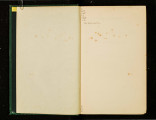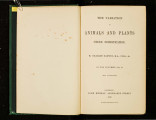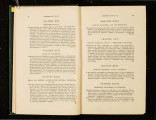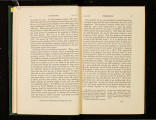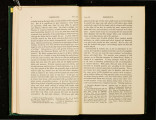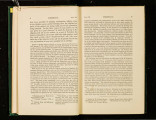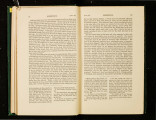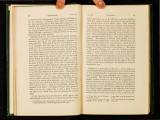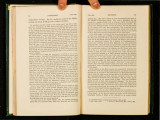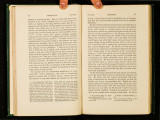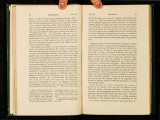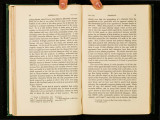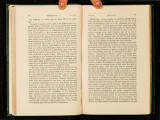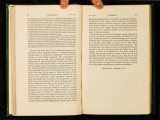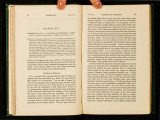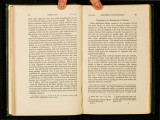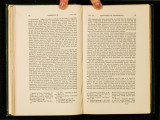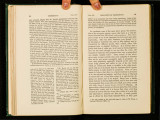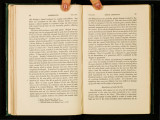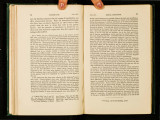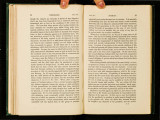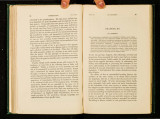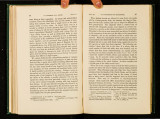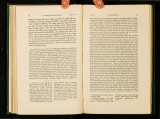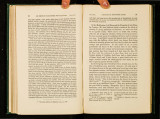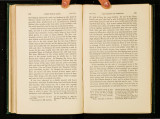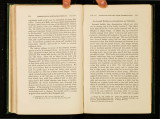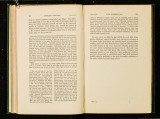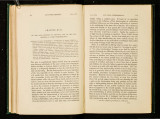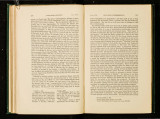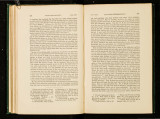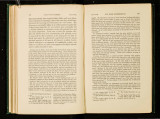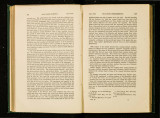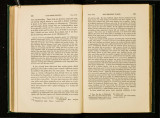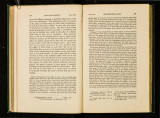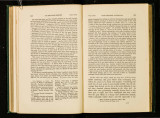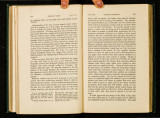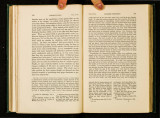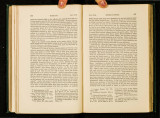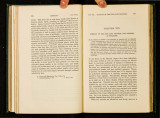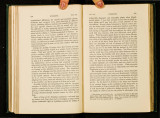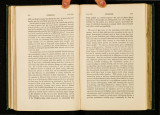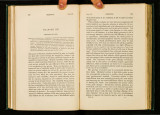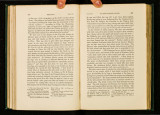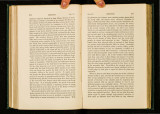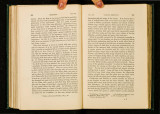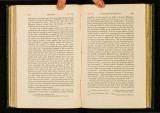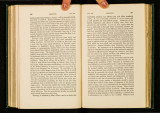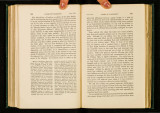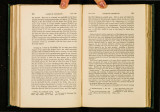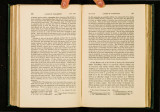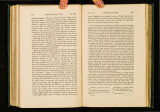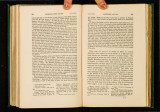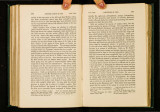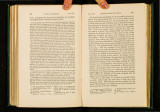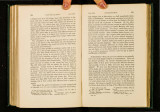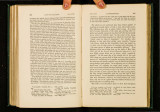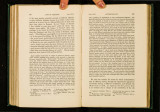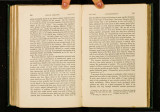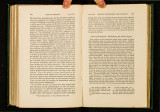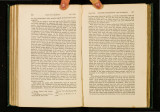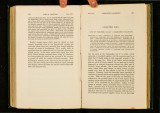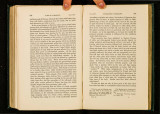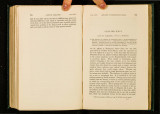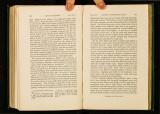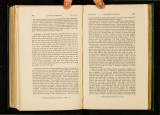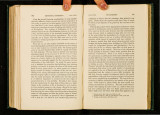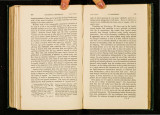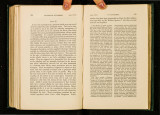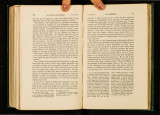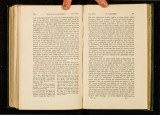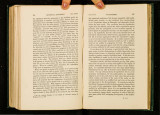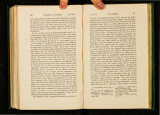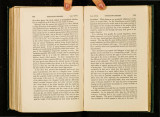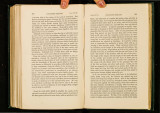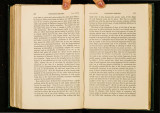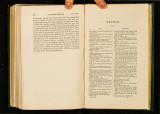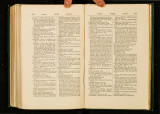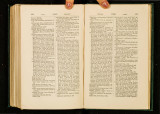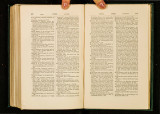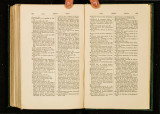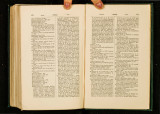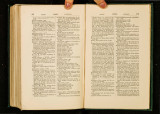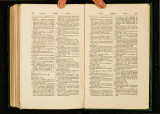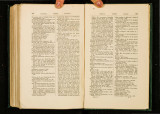| OCR Text |
Show 8 INHERITANCE. CuAf•. XII. have been recorded of epilepsy, consumption, asth~a, sto~e · th bladder cancer 1)rofuse bleeding from the shghtest m- In e ' ' d · · · : f the mother not giving milk, and of ba partuntwn ~~ 0 . cld b em· a m· h en't e d . In th1's latter respect I ·may mentiOn a.n o 0 case g1• ven by a goocl observer' 13 in which the fault lay. m tho of j1·.n. sprm• g, an d not 1'n the mother ·· in a part . of Y orksh1re the. farmers continued to select cattle with large lund-quarters, until they made a strain called "Dutch-buttocked," and "the monstrous size of the buttocks of the calf was frequently fatal to the cow, and numbers of cows were annually lost in calving." Instead of giving numerous details on various inherite~ m~lformations and diseases, I will confine myself to one organ, that whiCh 1s tho most complex, delicate, and probably best-kno':n i:r: the human. ~·ame, namcl!, the eye, with its accessory parts. To bcgm w1th the latter. I hav~ hca1d of a family in which parents and children wore affected b! droopmg c!elids, in so peculiar a manner, that they could not see w1thout tlll'owmg their heads backwards ; and Sir A. Carlisle 14 specifies a pendulous fold to the eyelids as inherited. " In a family," says Sir H. Holland/~ "whe~·e the father had a singular elongation of the upper eyelid, seven or ~1ght child:·en were born with the same deformity; two or three other children havmg it not." Many persons, as I hear from Mr. Paget, have two or t~rc.e of the hairs in their eyebrows (apparently corresponding with the v1bnssre of the lower animals) much longer than the others; and even so trifling a peculiarity as this certainly runs in families. With respect to the eye itself, the highest authority in England, 1\'l:r. Bowman has been so kind as to give me tho following remarks on certain inherited imperfections. First, hypermetropia, or morbidly long sight : in this affection, the organ, instead of being spherical, is too flat from front to back, and is often altogether too small, so that the retina is brought too forward for tho focus of the humours; consequently a convex glass is required for clear vision of near objocts, and frequently even of dista~t ones. This state occurs congenitally, or at a very early age, often m several children of the same family, where one of the parents has presented it.16 Secondly, myopia, or short-sight, in which the eye is egg-shaped, and too long from front to back; the retina in this case lies behind tl~e focus, and is therefore fitted to see distinctly only very ncar objects. Th1s condition is not commonly congenital, but comes on in youth, the liability to it being well known to be transmissible from parent to child. The change from tho spherical to tho ovoidal shape seems the immediate con- 13 Marshall, quoted by Youatt in his work on Cattle, p. 284. H ' Philosoph. 'fransact.,' ISH, p. 9-!. 1" 'Medicrtl Notes and Refl.eetious,' 3rd euit., p. ;)3. 16 This affection, as I h ear from l\1r. Bowman, has been ably describe<! aud spoken of as hereditary by Dr. Donclers of Utrecht whose work was publish;d in English by tho Sydonham Society in lSt.i-1. CHAP. Xil. INHERITANCE. 9 sequence of something like inflammation of the coats, under which they yield, and there is ground for believing that it may often originate in causes acting directly on the individual affected, and may thenceforward become transmissible. When both parents are myopic Mr. Bowman has observed the hereditary tendency in this direction to be heightened, aml some of the children to be myopic at an earlier age or in a higher degree than their parents. Thirdly, squinting is a familiar example of hereditary transmission: it is frequently a result of such optical defects as have boon above mentioned; but the more primary and uncomplicated forms of it are also sometimes in a marked degree transmitted in a family. Four1hly, Cataract, or opacity of the crystalline lens, is commonly observed in persons whose parents have been similarly affected, and often at an earlier age in the children than in the parents. Occasionally more than one child in a family is thus afflicted, one of whose parents or other relation presents the senile form of the complaint. When cataract affects several members of a family in the same generation, it is often seen to commence at about the same age in each ; e.g., in one family several infants or yolmg persons may suffer from it; in another, several persons of middle age. Mr. Bowman also informs me that he has occasionally seen, in several members of the same family, various defects in either the right or left eye ; and Mr. White Cooper has often seen peculiarities of vision confined to one eye reappearing in the same eye in tho ofispring.17 The following cases are taken from an able paper by l\fr. W. Sedgwick, and from Dr. Prosper Lucas.18 Amaurosis, either congenital or coming on late in life, and causing total blindness, is often inherited ; it has boon observed in tlll·ee successive generations. Congenital absence of the iris has like'Wise been transmitted for three generations, a cleft-iris fOl' four generations, being limited in this latter case to tbo males of the family. Opacity of the cornea and congenital smallness of tho eyes have been inherited. Portal records a curious case, in which a father and two sons were rcnderccl blind, whenever tho head was bent downwards, apparently owing to tho crystalline lens, with its capsule, slipping tlll·ongh an unusually large pupil into the anterior chamber of the eye. Day-blindness, or imperfect vision under a bright light, is inherited, as is night-blindness, or an incapacity to sec except under a strong light : a case has been recorded, by M. Cunicr, of this latter defect having affected eighty-five members of tho same family during six generations. The singular incapacity of distinguishing colours, which has boon called Daltonism, is notoriously hereditary, and has been traced tlll·ough five generations, in which it was confined to the female sox. With respect to the colour of the iris : deficiency of colouring matter is well known to be hereditary in albinocs. Tho iris of one eye being of a different colour from that of tho other, and tho iris being spotted, arc cases which have been inherited. lVi:r. Sedgwick gives, in addition, on the 17 Quoted Ly l\Ir. Herbert Spencer, 'rrinciplcs of Hiulogy,' vol. i. p. 2H. 18 'British uml . l!'oroigu 1\:fudico-. Uhimrg. Review,' April, l 8Gl, p. 482-6; 'l'llcred. Nat.,' tom. i. pp. 3D l--!08. |




